The supreme (God)deity is, in a nutshell, literally, “God at the top.
However, God at the top can be taken to mean several things.
- Is it the top among many gods?
- Is it the one and only supreme god without admitting many gods?
There is also the simple (but actually profound) issue of “which god is the supreme god after all,” although each religion has put forth a “supreme god”.
In this essay, I would like to deepen the discussion on “supreme deity” from several angles as follows.
- Why there are so many different names for the supreme deity
- Which religion’s “supreme deity” is really the supreme deity?
- What kind of being is the supreme deity in the first place?
Religious Pluralist Understanding of “Supreme God”
Various supreme deities in each religion
The first supreme deity that comes to mind for Japanese people is the Shinto deity Amenominakanushi no Kami.
Incidentally, Amaterasu is positioned as the “presiding deity.
Or perhaps you may think of Zeus from Greek mythology. Zeus, the “Almighty.”
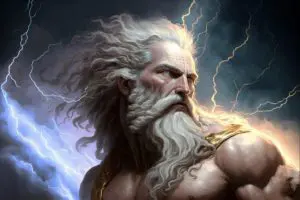
Zeus
In Indian Hinduism, Vishnu would be the equivalent of a supreme deity. In the Hindu interpretation, Shakyamuni is positioned as a “variant” of Vishnu.
And since almost half of the world’s population is Christian or Muslim, it is impossible to discuss the supreme deity without excluding the triune God of Christianity and Allah of Islam.
Yahweh, the God of Judaism, the mother of both religions, is also regarded as the supreme and only God in the history of the establishment of Judaism, so although Judaism itself is an ethnic religion, it is necessary to consider Yahweh as well.
*Reference article. Yahweh and Elohim are Two Different Gods – Why It is Better to Distinguish between the Ethnic Gods and the Supreme God
Well, since there have been as many religions as there are stars since ancient times, it is safe to say that a supreme deity has existed and has been believed in for as long as each religion or as many civilizations.
Henotheism, Monolatry, Absolute Monotheism
Next, there is the issue of whether the supreme deity recognizes other (inferior) deities or whether it does not recognize polytheism other than the supreme deity.
First of all, if you recognize the existence of many gods within your own religion, it is called polytheism, right? Shinto and ancient Greek and Roman religions are typical examples.
In contrast, if one worships only one god in one’s own religion, it is called monotheism.
Furthermore, even within Monotheism, the pattern of worshipping one god after acknowledging the gods of other religions is called monolatry, while the pattern of worshipping only the god of one’s own religion as the only god is called absolute monotheism.
This classification of worship monolatry and absolute monotheism is a taxonomy conceived in the history of the establishment of Judaism.
A careful reading of the Old Testament suggests that in the early days they acknowledged other gods. On top of that, they believed only in Yahweh. This is worship monolatry
However, around the time of the famous Babylonian Captivity (6th century BC), Yahweh alone became the creator God of the world. This is absolute monotheism.
Hence, there are three different ways of being a “supreme deity” as follows.
- Henotheism : In polytheism, only one of the gods is worshipped as the supreme deity (main deity).
- Monolatry : In monotheism, the existence of gods of other religions is assumed to be recognized, and the supreme deity is worshipped.
- Absolute Monotheism : In monotheism, the existence of gods of other religions is not recognized, and only the supreme deity is worshipped.
Why are there different names for the supreme deity?
As explained above, the term “supreme deity” has different meanings in different religions.
But be that as it may, history has proven that each religion has its own “top deity” that often clashes with the “top deity” of other religions, and that is one aspect of religious exclusivity.
We don’t see any religions that preach, “The god of that religion is higher in rank than the god of ours.”
It is important for a religion to “stand firm in its faith,” and for this reason, it is natural to take justifiable pride in the “supreme” deity that one worships in one’s own religion.
However, this raises the question of which religion is correct, or which supreme deity is truly “supreme.
We have answered this question in various articles on our website (Neo Buddhism).
What I mean is the following understanding.
Although there is only one God, He manifests Himself in various ways, taking into account the characteristics of the times, the locality, and the ethnicity of the people. Hence, the name of God changes from one religion to another.
This kind of thinking is called “religious pluralism. A representative thinker is John Hick, who wrote a book entitled “Problems of Religious Pluralism.
There is a saying, “Blind men and an elephant.
It refers to a phenomenon in which there is one elephant, but blind people disagree with each other’s views, stroking various parts of the elephant and saying, “An elephant is a tusk,” or “No, an elephant is a long nose.
In the same way, God is one, but each religion understands God in a different way. This is why “God is one but has many names.
The three major religions of the world-Christianity, Islam, and Buddhism-identify God the Father (Elohim), Allah, and the Amitabha Buddha, respectively, as the “God of Mercy (Buddha).
As mentioned above, these beings can be understood as one God (or Buddha) in origin, although they appear in different ways in consideration of their historical, regional, and ethnic characteristics.
This way of thinking opens up the possibility for the world’s three major religions to coexist without conflict, as if their differences are merely differences in “individuality” and that they are all one in origin.
However, it may be objected that God in Christianity and Allah in Islam are the same GOD in the first place, at least as perceived by the Islamic side.
This is indeed true, since neither Elohim nor Allah is a proper noun, but a common noun, i.e., GOD with a capital letter. Historically, and even today, the two religions are in conflict.
The above-mentioned “one God” is a basic theory that should be shared among religions as common sense, so of course it is difficult to wipe out conflicts between religions with this theory alone.
In fact, Christianity and Islam have historically been in conflict.
I believe that this is due, first, to the fact that people are not fully aware of the fact that they share the same God, and second, to the fact that they do not have a three-dimensional understanding of the differences between religions.
To use the “blind men and an elephant” analogy, it is necessary to identify the relationship between the tusks and the long nose, etc., and through reason and dialogue, to strive for a more three-dimensional understanding of a single elephant.
It is with this very awareness of the issues that I launched “Neo Buddhism.
Since the theme of this issue is “supreme deity,” we will not go into further depth, but please refer to the following article, for example, which details the relationship between Buddhism and Christianity.
*Reference article. Buddhism and Christianity – Theory to Overcome Differences and Extract Similarities
I am convinced that the first step is to consider that “the One God is manifested in various ways in consideration of the times, regions, and ethnicities, and is seen in different ways due to the limitations of human comprehension.
Therefore, first of all, I would like to ask you to keep the following equation in mind.
Elohim = Allah = Amitabha
We will discuss further in the next section.
Incidentally, some of you may be wondering whether God the Father in Christianity is Yahweh.
Please refer to the following article for a discussion of this issue.
*Reference article. Yahweh and Elohim are Two Different Gods – Why It is Better to Distinguish between the Ethnic Gods and the Supreme God
What is GOD (the fundamental Buddha) as Essentia (essence) that transcends personality?
Now, as the supreme deity, I mentioned above that Neo-Buddhism adopts the following equation.
Elohim = Allah = Amitabha Buddha
In the sense of “the merciful and compassionate God (Buddha).
This equation is true only if it is limited to the “earthly ground.
In the first place, it is strange that the Supreme Being, who is omnipresent in the macrocosm, has any name.
…because a name, by itself, has an exclusive and limited nature, doesn’t it?
If the name is “Mr. Suzuki,” it is, conversely, “not Mr. Sato. Hence, the true supreme and universal God is not comfortable with names.
However, it is not possible to refer to them without giving them some kind of name. In Buddhism, we use names such as “Dharma Body Buddha, Vairocana Buddha, or Dainichi Nyorai”.
The Christian God is God the Father = Elohim, which is also one of the three persons of the Trinity. The Latin word is “persona,” and persona means “mask.
…This means that there is an essential way of being before the mask is put on. This is sometimes called “essentia” (essence).
Ibn ‘Arabi, who laid the foundation for “Oneness of Being,” a mainstream philosophy in Islam, named “existence” as the essential state of being prior to Allah, the Personality of Godhead.
In Buddhism, as I mentioned earlier, “Essentia” is tentatively called “Dharma Body,” “Vairocana Buddha,” or “Dainichi Buddha.
Taoism calls it Tao (way).
Thus, beyond the personal God, “an essential being before appearing dialectically so that humans can understand Him, a being that does not fit the name,” is the supreme God in the true sense of the word.
In a manner of speaking, ” Absolute Nothingness” is the supreme deity.
In this case, “nothing” is not just zero, but zero as the potential for the creation of all existence.
If the supreme God as essentia (essence) remains as it is, then from individual phenomena such as human beings (if we were to use a dualistic scheme), it is no longer an unapproachable entity. As it is, we cannot even receive teachings from the supreme God.
Therefore, the supreme deity as Essentia first took on a personality in the earthly realm, and then manifested as Elohim, Allah, or Amida Buddha, depending on the time and region.
Here, for the first time, he becomes a personal god who can negotiate with human beings.
Here, too, the objection might come, “Aren’t Elohim and Allah common nouns, not proper nouns?” but it is still only the common noun GOD in the earthly terrain, GOD as a personal deity.
Incidentally, some of you may feel slightly uncomfortable with “Amida Buddha” in the above equation.
However, the Amida Buddha in this case is not the Amida Buddha who fits into the category of “Pure Land Buddhism.
Pure Land teaching is about Amida Buddha’s true desire, its fulfillment, and the invitation to the Pure Land of Ultimate Bliss.
The Buddhāvataṃsaka Sūtra is the highest degree of abstraction among Buddhist scriptures.
The Buddhāvataṃsaka Sūtra is precisely the sutra that explains the function of the Dharma-body Buddha, Vairocana Buddha, as the Essentia.
At the end of the Buddhāvataṃsaka Sūtra, it says, “Take refuge in Amida Buddha (Amitābha).
This is to say that Amida Buddha is assumed to be a personalized version of Vairocana Buddha.
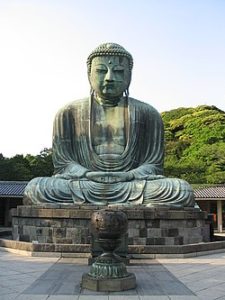
Amitābha
By raising the level of abstraction of God to the level of essentia (essence) before it has a name, as described above, it will be understood that “all religions flow from the One God” in the true sense of the word.
Literally, as a “supreme proposition,” the name of the supreme deity, Elohim, Allah, Amida Buddha…, etc., is obliterated by what can only be described as ” Absolute Nothingness,” and this is the true supreme deity.

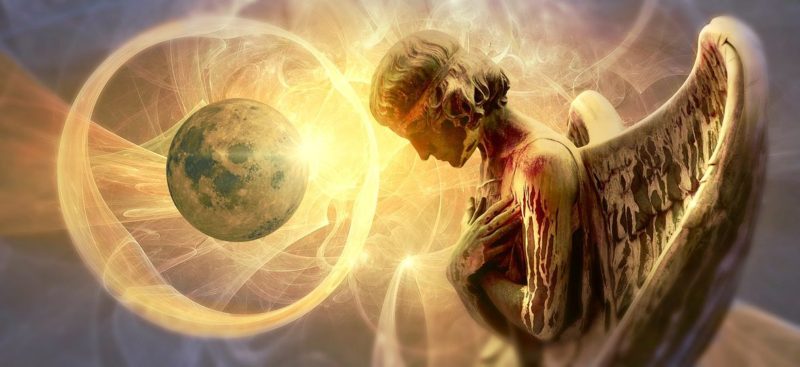
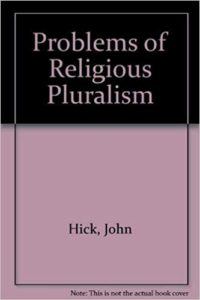


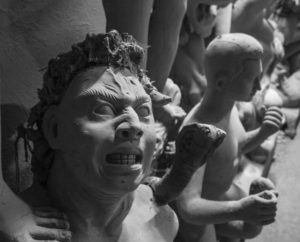
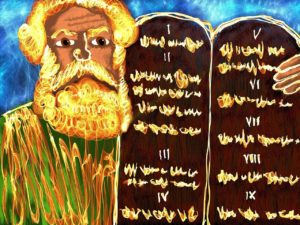

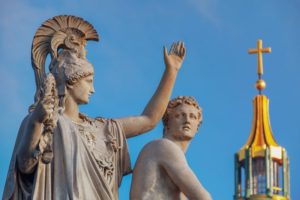

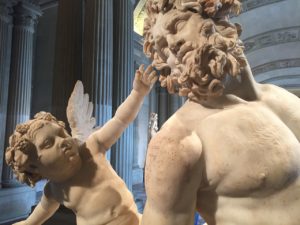
Comments